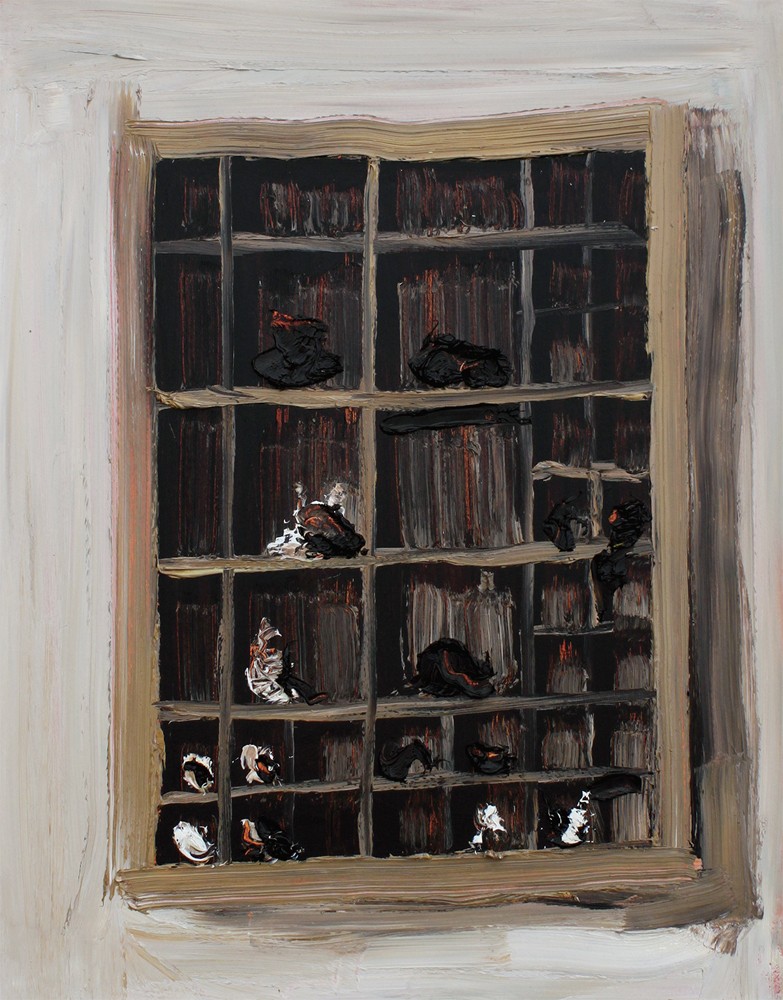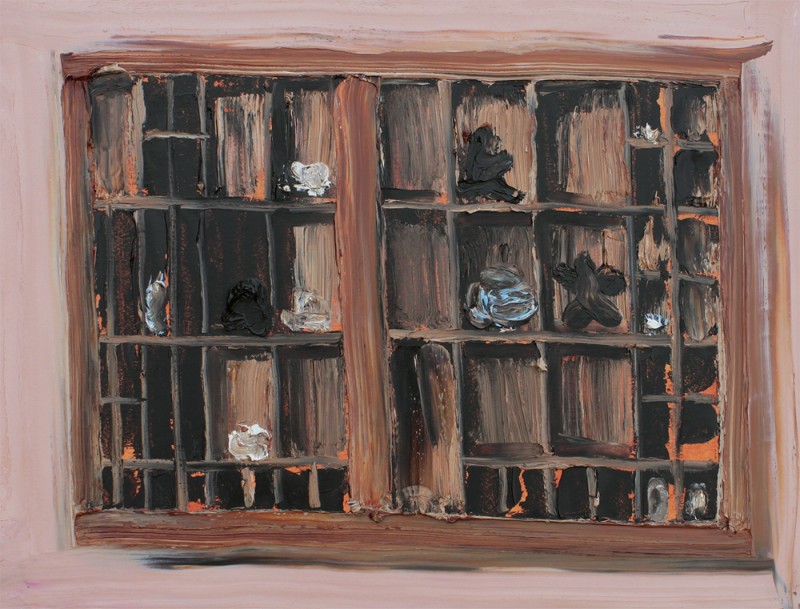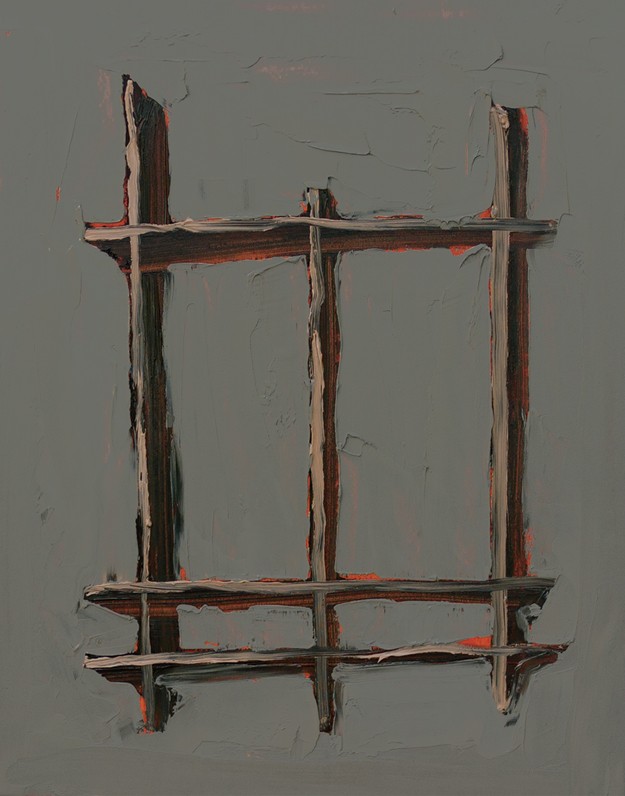The Beauty of Being Boxed In
The work of Winnipeg artist Brian Hunter traces a process of ongoing and inventive transformation with the object he is painting, transforming into different subjects. A letterpress box that was used as a display case for trinkets his wife’s grandmother had collected has been changed into a body of paintings that touches on everything from architecture to an engagement with the history of modernist painting. All his paintings in this series are oil on wood; the largest is 36 x 48 inches, the smallest 10 x 8 inches.

Small Box with Black and White Shapes, 2015, oil on wood, 18 x 14 inches. All images courtesy the artist.
At all scales, they are rich and cranky and compelling. Two Empty Trays Mounted Vertically is a prime example. The painting shows a pair of letterpress boxes placed side by side: the right-hand half looks like a densely populated high-rise complex, the left-hand portion like a rack of disintegrating books in a neglected library. This work earned him a proper place in the upcoming 2016 RBC Canadian Painting Competition.
Because of its grid form, the letterpress box is an adaptable object. Anything can be placed inside the grid and the grid itself can be subjected to a range of radical changes. Hunter is aware of artists, including Adolph Gottlieb, Joaquín Torres-García, Agnes Martin, Ignacio Iturria and Dil Hildebrand, who have used the grid and its promising containment as a springboard into unlimited subjects. He has played with his own range of possibilities; in Undone, 10 x 8 inches, he reduces the box and its content to a frame and a reveal, where the burnt sienna underpainting emerges like a delicate wound; in Bracket, 24 x 18 inches, he further minimizes the box until it becomes a wobbly arrangement of six lines that hang like sticks on a wall. Here, the underpainting burns through to the surface, as if the object were lit from within and about to ignite.

Letterpress Box #4, 2015, oil on wood, 18 x 24 inches.
Hunter sees two stages in his compositional process. “I have the initial enthusiasm to map it out and put together blocks of colour with the light and the dark; the second part is figuring out where, or if, I’m placing things.” In Small Box with Black and White Shapes (18 x 14 inches) you can see evidence of how he has resolved this visual problem. The painting shows a box with clearly defined compartments in which things sit: some look like awkward miniature figures in the process of finding their form, others look like meticulously placed impasto bird-droppings. The work walks a fine line between figure and mark. “I don’t know if they’re gestures or figures; I wait to see how it develops. I’m trying to work out a balance between painting a letterpress box and making a painting where I’m not thinking of the original object at all. I’m letting the construction of the boxes happen more intuitively and making it up as I go.” What has remained consistent throughout his variations on a state of containment is the pleasure he takes in the act of painting. “I want to make marks because that’s when I enjoy myself the most. In a way, that’s what I’m collecting.” ❚

Bracket, 2016, oil on wood, 24 x 18 inches.

